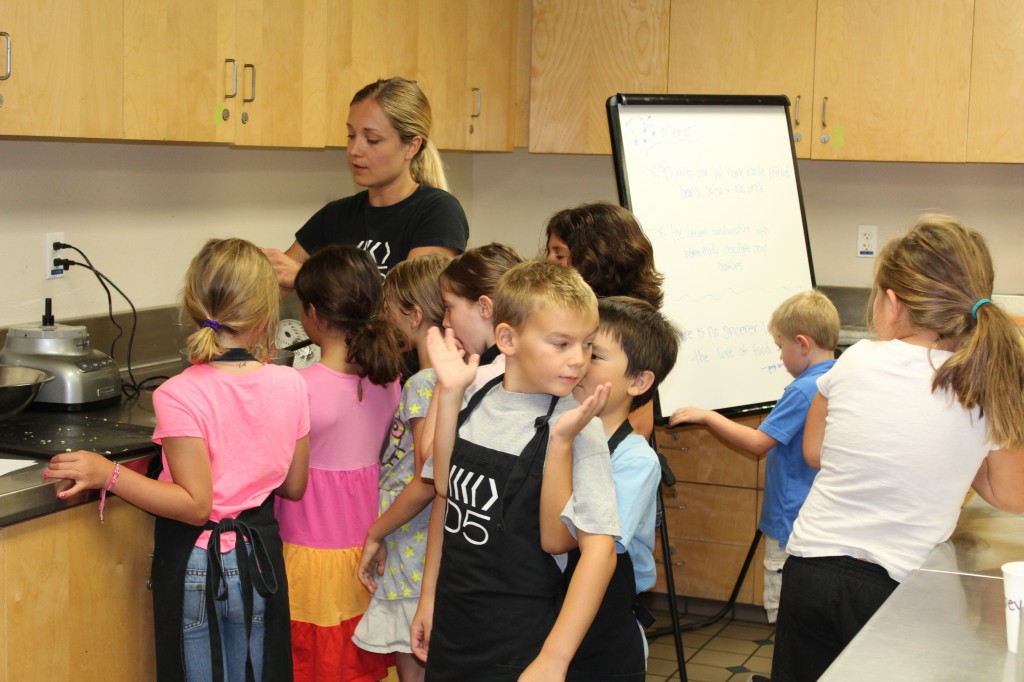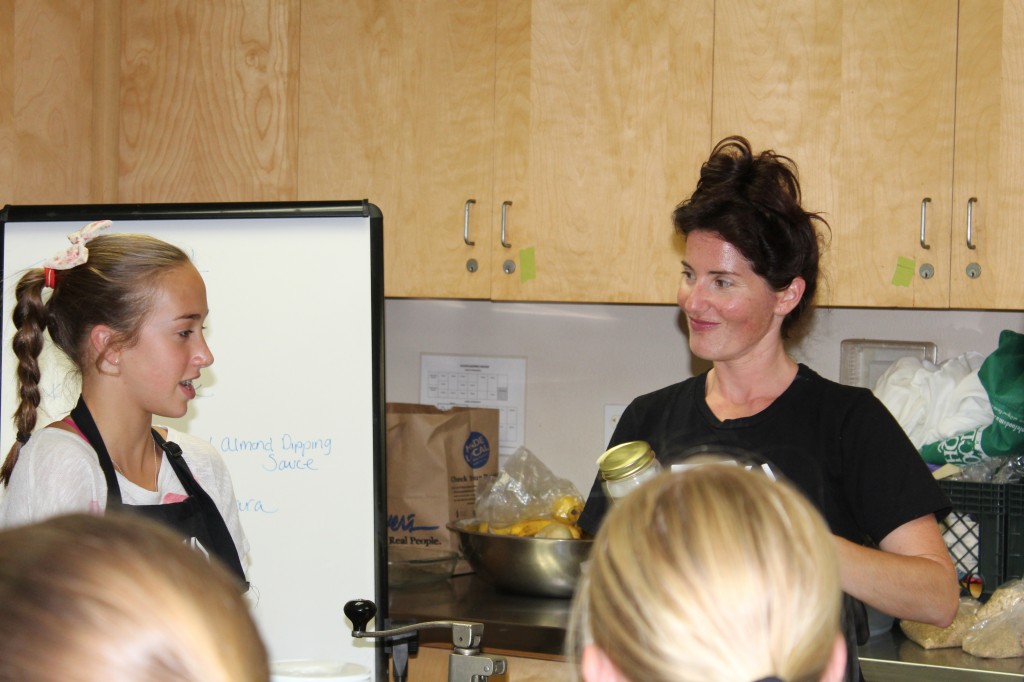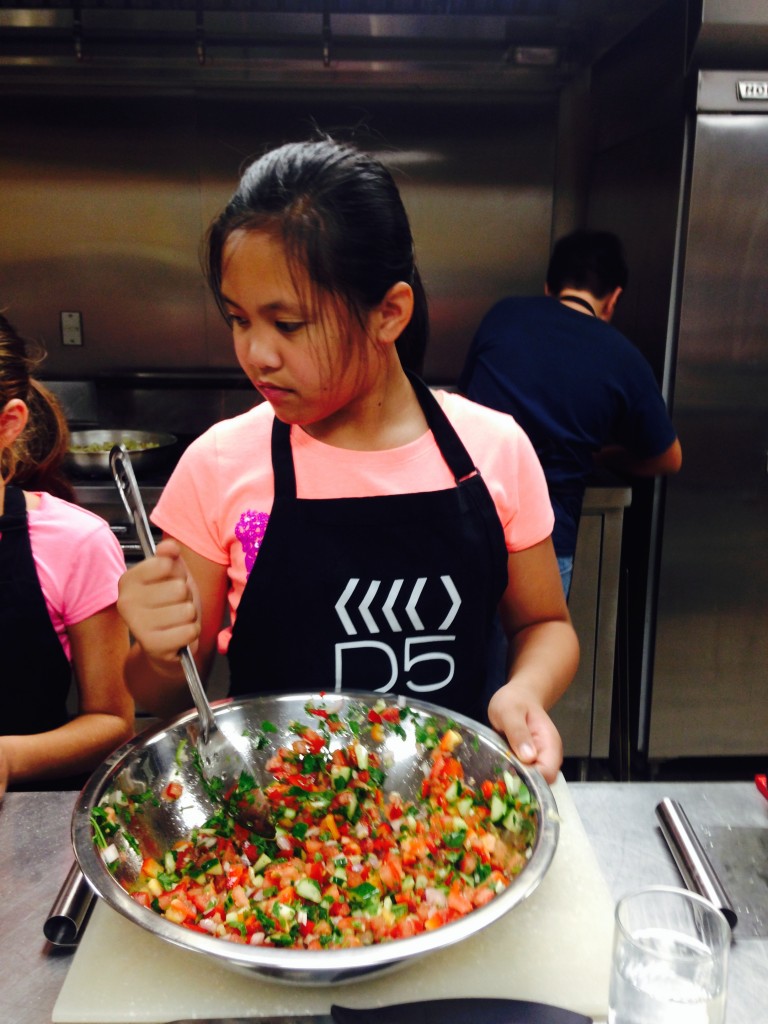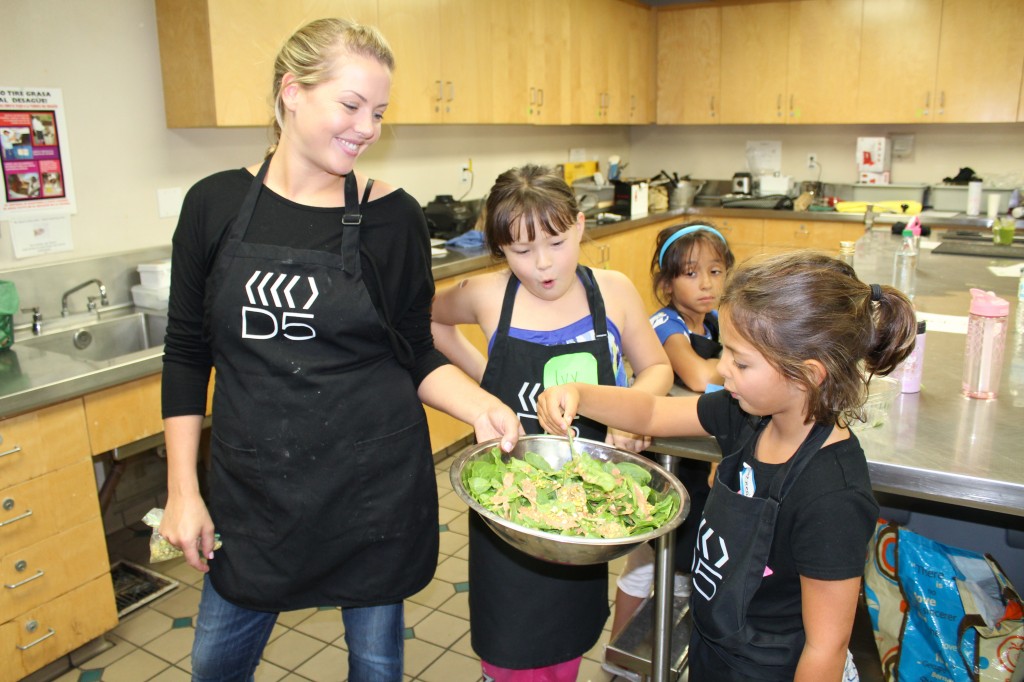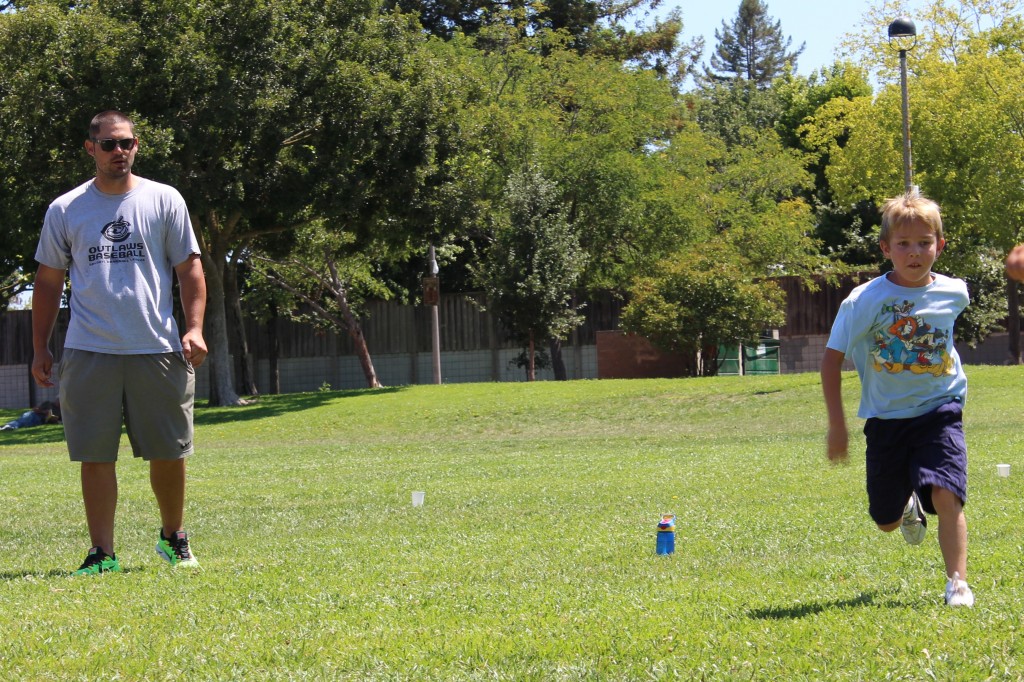Here are two new ways to sign up for our Newsletter! Please sign up yourself and pass this along. Thanks!
For a Text Sign-Up-Just send your email address by text message to:
DIRECTIONFIVE at 22828
Or Scan:

We always try our best (and almost always succeed) in making changes to our program/classes if we have a child in class who requires substitution of ingredients. If there is a peanut allergy, we’ll use almond butter in the recipe instead (think of our famous Peanut Dipping Sauce), if someone is lactose intolerant, we’ll use almond or other nut or seed milk. In tomorrow’s class we have a D5 student chef who cannot have gluten, so our Garden Cake-always a favorite-will be made with our Non-Gluten Flour Mix.
We aim to please!
Hello parents and future DirectionFive students! We’re looking forward to meeting all of you this Friday! We’ll be making Minestrone Soup with a green salad and vinaigrette, then Autumn Drinks (a fun new class) and finally an Italian Scramble with Autumn Fruits and Chopped Mint. Delicious!
See you soon!
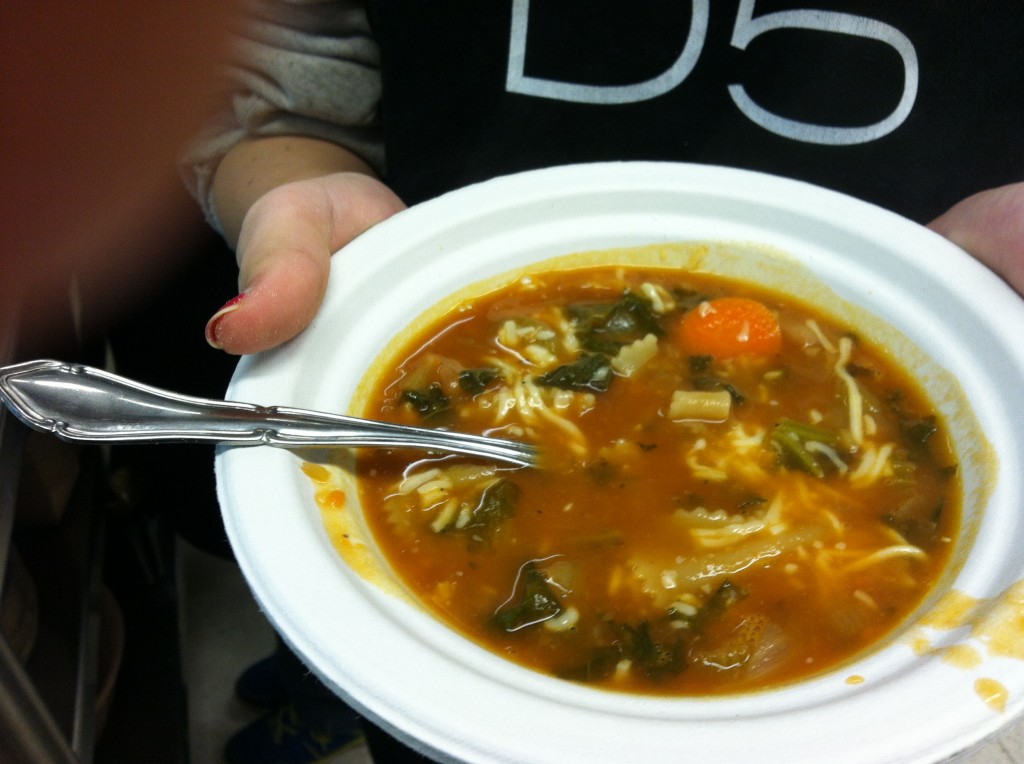

Immune/Lymphatic System:
The immune system is our body’s defense system against infections and diseases. Cells, tissues and organs work together to respond to dangerous organisms like viruses, fungi or bacteria that may enter the body from the environment. There are three types of response systems in the immune system: the anatomic response, the inflammatory response, and the immune response.
• The anatomic response prevents threatening substances from entering your body. An example of the anatomic system would be the skin. If substances do get by, the inflammatory response goes on attack.
• The inflammatory system works by excreting the invaders from your body through fever, sneezing, and runny noses.
• When the inflammatory response fails, the immune response goes to work. This is the central part of the immune system that is made up of white blood cells, which fight infection. About a quarter of white blood cells, called the lymphocytes, migrate to the lymph nodes and produce antibodies, which fight disease.
The organs of the immune system are called the lymphoid organs that affect a type of white blood cells. The organs of the lymphoid system are:
• Adenoids are masses of lymphoid tissue in the upper part of throat behind the nose that trap bacteria and viruses as you inhale.
• Appendix function is unknown.
• Blood vessels carry blood.
• Bone marrow is the located in the center of bones and is where red blood cells are manufactured.
• Lymph nodes are located throughout the body and acts as filters, removing bacteria, fluids and cancer cells that travel through the lymphatic system.
• Lymphatic vessels carry lymph.
• Peyer’s Patches are lymph follicles on the mucosa of the small intestines and play a role in immunological response.
• The spleen is an organ that contains white blood cells
• Thymus is important for the development of the immune system in children, as the T cells develop in the thymus. The thymus shrinks with age.
• Tonsils help to trap bacteria and viruses as you breathe.
The lymphatic system is a subdivision of the immune system that filters out organisms that cause disease, produces white blood cells, and generates disease-fighting antibodies. It also distributes fluids and nutrients in the body and drains excess fluids and protein so that tissues do not swell. It does not contain blood, but rather lymph, which is formed from the fluid surrounding body cells and diffused into lymph vessels.
Problems of the immune system:
Diseases and problems with the immune system can be divided into two basic categories. Those in which the body’s ability to fight disease is impaired and those in which the immune system overreacts to stimuli, causing damage to the other organs or systems of the body.
AIDS or acquired deficiency syndrome is an infectious disease caused by the human immunodeficiency virus or HIV, which destroys immune cells and can affect the body’s organ systems.
Autoimmune diseases are diseases in which the immune system attacks and destroys healthy body tissues. There are more than eighty types of autoimmune disorders, including lupus, rheumatoid arthritis, diabetes, Hashimoto thyroiditis and Sjogren’s syndrome.
Allergies are an abnormality high sensitivity to substances such as foods, pollens, molds, and/or microorganisms. There is a correlation between asthma and allergies.
To maintain a healthy immune system don’t smoke, eat a diet high in fruits, vegetables, and whole grains, and low in saturated fat, exercise regularly, maintain a healthy weight, control your blood pressure, if you drink alcohol, drink only in moderation, get adequate sleep, take steps to avoid infection, such as washing your hands frequently and cooking meats thoroughly, get regular medical screening tests for people in your age group and risk category.
Well, it’s Macaroni and Cheese season and the kids love our recipe!
Yes, it’s Mac and Cheese and shouldn’t be eaten often as it’s very rich, but our version offers four different veggies, which adds important nutrition to this comfort-food favorite.
Macaroni and Cheese
Everyone loves macaroni and cheese. This recipe does still have the cheese and butter (don’t eat often!), but it also has 4 different vegetables.
1 teaspoon olive oil
2 teaspoons sea salt
1 pound elbow macaroni
1 quart milk, heated
8 tablespoons (1 stick) unsalted butter, divided
1/2 cup all-purpose flour
3 cups Gruyere cheese, grated (about 10 ounces)
2 cups extra-sharp cheddar, grated (about 6 ounces)
1/2 teaspoon freshly ground black pepper
1/2 teaspoon grated nutmeg
1 ½ cups broccoli, chopped, lightly steamed
1 cup peas, if frozen, just run under hot water and drain
1 medium carrot, finely chopped, steamed
3/4 pound fresh tomatoes (4 small)
1 1/2 cups fresh bread crumbs, about -5 slices, cut into small pieces
Preheat the oven to 375 degrees F.
Drizzle oil into a large pot of boiling salted water. Add the macaroni and the 2 teaspoons of salt and cook according to the directions on the package, 6 to 8 minutes. Drain well.
Melt 6 tablespoons of butter in a large (4-quart) pot and add the flour. Cook over low heat for 2 minutes, stirring with a whisk. While whisking, add the hot milk and cook for a minute or two more, until smooth. Turn off the heat and add the Gruyere, cheddar, 1 teaspoon sea salt, pepper, and nutmeg. Add the cooked macaroni and stir well. Stir in the broccoli, peas and carrots. Pour into a 3-quart baking dish.
Slice the tomatoes and arrange on top. Melt the remaining 2 tablespoons of butter, combine them with the fresh breadcrumbs, and sprinkle on the top. Bake for 30 to 35 minutes, or until the sauce is bubbly and the macaroni is browned on the top.
To make ahead, put the macaroni and cheese in the baking dish, cover, and refrigerate until ready to bake. Put the tomatoes and breadcrumbs on top and bake for about 40 to 50 minutes.
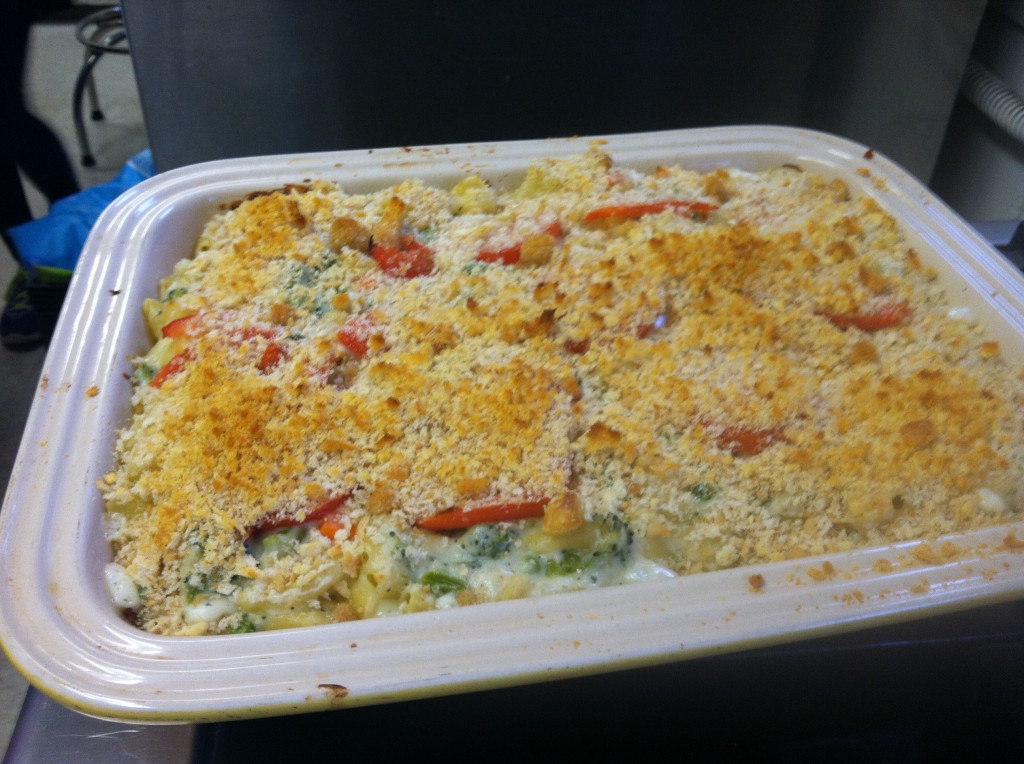
 We like to acknowledge others who are working with our kids helping them to lead healthier lives. Janet Caliri from Visible Transitions will explain in her own words the work she does with kids:
We like to acknowledge others who are working with our kids helping them to lead healthier lives. Janet Caliri from Visible Transitions will explain in her own words the work she does with kids:
“Visible Transitions assists young people who are challenged in life’s transitions. Founder, Janet Caliri, does this by using her photographic methodology to chart progress and turn an invisible story, visible. Weaving a tapestry, she intersperses coaching tools while documenting transformational moments embodying feelings, emotions and thoughts, forming a solid canvas. When immediate photographic evidence is visible, so is the bigger story. Confidence soars and gives the trauma a rest. (trauma arrest.) And then, a personal photographic journey of progress gives rise to tangible, measurable results. Within a few weeks, the child is already seeing a remarkable difference in the way they approach life.
For example, they are becoming more present, fostering self-understanding, compassion and empathy; developing a deeper trust in life and self-confidence.
There is significantly more ease in communication and decreased anxiety. Lastly, the kids identify their essential energy and sense of purpose
Studies show that youth learn and cope far better with hands-on activities and collaboration. Visible Transitions supports new neurons! Current research proves the growing brain has far more developmental possibilities than ever thought before. For example, the hippocampus is frequently making new neurons which are activated while learning. And learning is in the moment of capturing a value (an emotion, feeling or thought,) with a photograph. Noting the value supports the new neuron. Visible TransitionsTM trains the brain through visuals and clarifying values. It helps turn information into personally relevant knowledge.
To learn more about Janet Caliri and be part of Visible Transitions program, please contact Janet directly at janet@janetcaliri.com or 323.252.0963 or visit www.visibletransitions.com
JANET CALIRI
www.visibletransitions.com
323.252.0963
We have taught countless kids how to make our Minestrone Soup and it’s always a hit!
Minestrone Soup with Farro
Serves 8
2 cups canellini beans, cooked. You may use 1 15-ounce can
3 cups carrots, chopped
1 1/2 cups celery, chopped
1 bunch kale, chopped
1 whole onion, chopped
3 cups tomatoes, chopped or 1-28 ounce can diced tomatoes
2 quarts vegetable stock
2 tablespoons olive oil
6 cloves garlic, chopped
1 tablespoon fresh sage, chopped
1 tablespoon fresh rosemary
1 tablespoon fresh oregano
1 cup Parmesan cheese, grated
3 cups cooked farro. Follow the directions on the package.
Sea salt and pepper, to taste
In a stockpot, sauté onion, garlic, celery & carrots for 5 minutes.
Add kale & cook for an additional 5 minutes.
Add tomatoes and herbs and cook 10 minutes longer.
Add cannellini beans & stock. Let simmer 30 minutes.
Optional: Puree 1/3 of soup with immersion blender or use food processor. (We always do this…)
Add farro & serve with drizzling of olive oil and parmesan cheese.
Farro
Farro is an ancient form of wheat and is generally soaked before using. A hearty grain, also wonderful in grain salads. Just add vinaigrette, seasonal raw veggies and you’re set! Substitute brown rice if necessary.
Eating Seasonally
Spring: Dandelion greens, green garlic, green peas, spinach
Summer: Fresh basil, tomatoes, zucchini, bell peppers, leafy greens, celery, carrots
Autumn: Bell peppers, pumpkin, broccoli,
Winter: Bok choy, broccoli, cabbage, kale, carrots, winter squash
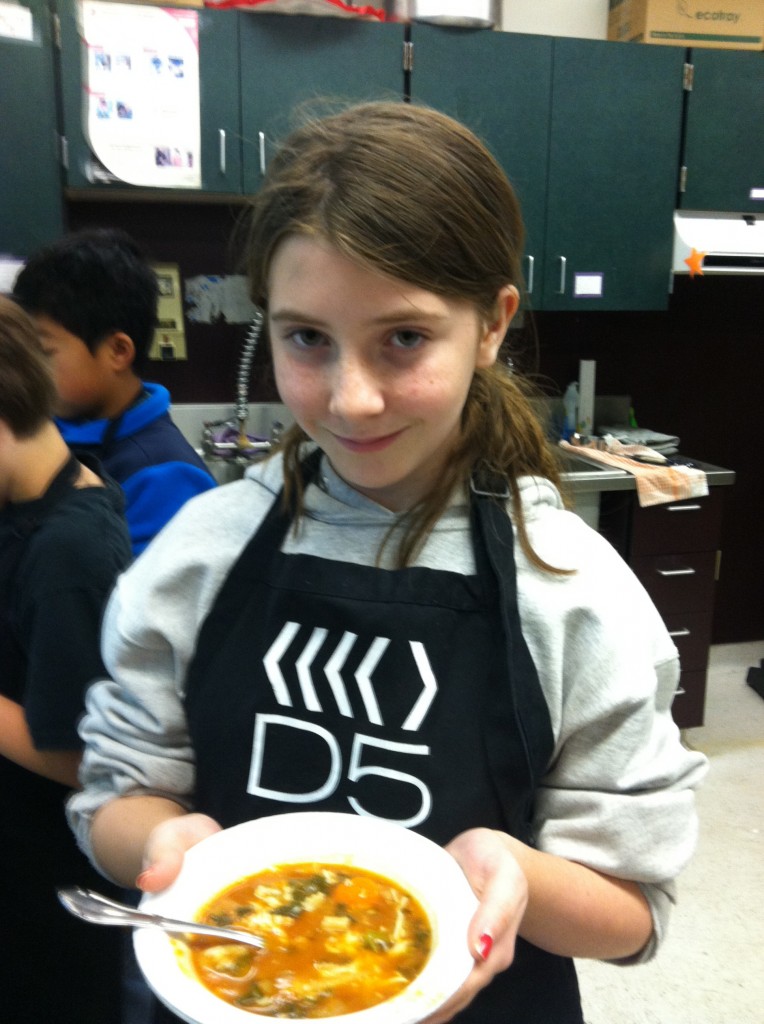
We are thrilled to have been asked to teach at Mary Collins School at Cherry Valley Valley in Petaluma! We begin our 6-class after school program in October and we’re thrilled to be there! Registration is available on the Home page.
Yes, we will be making this delicious Stroganoff recipe in class!
See you then!

Well, Summer Camp for Kids is over and we’re pleased to say, it was a success! The kids learned a lot about their health while creating great meals. At D5 our mission statement says it all: Our Mission is to improve the health of kids so they can lead healthier, happier, more productive lives.
Here are some photos from the last week’s camp. Now we look forward to our after school program-is your school signed up? Let us know!
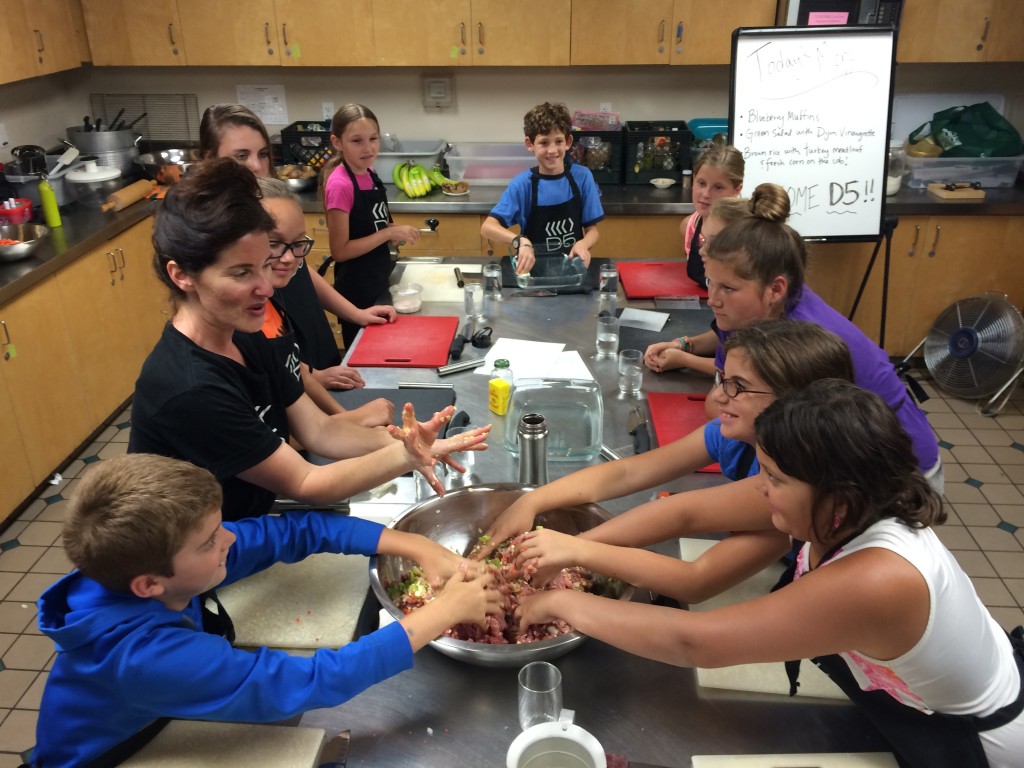
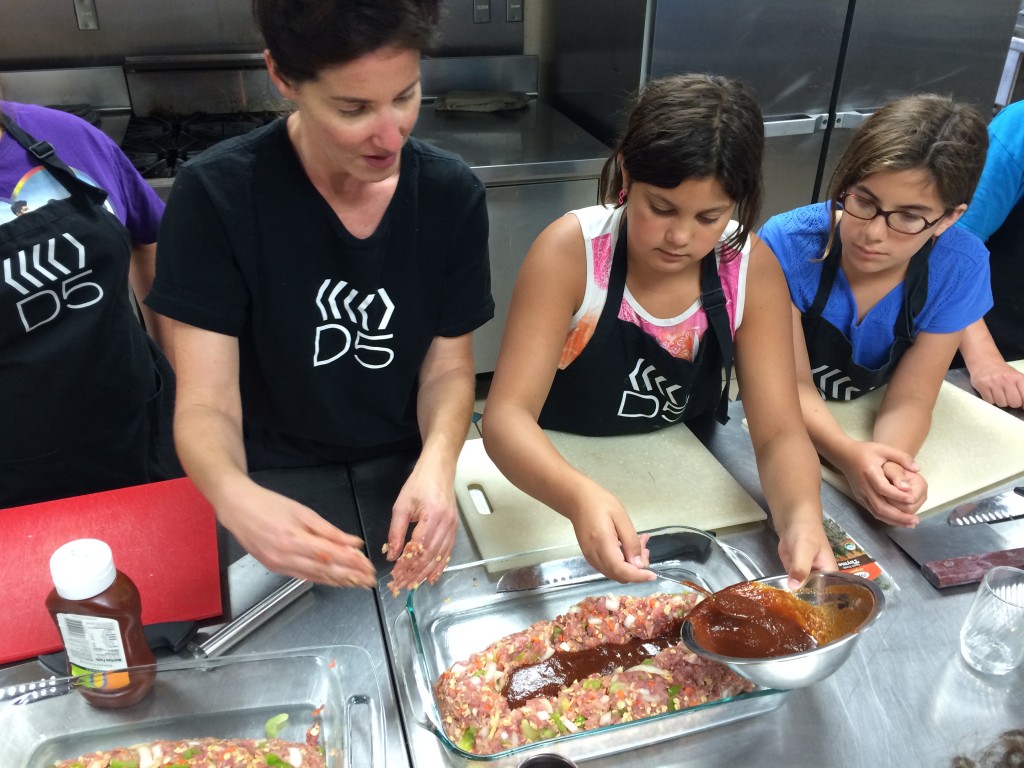
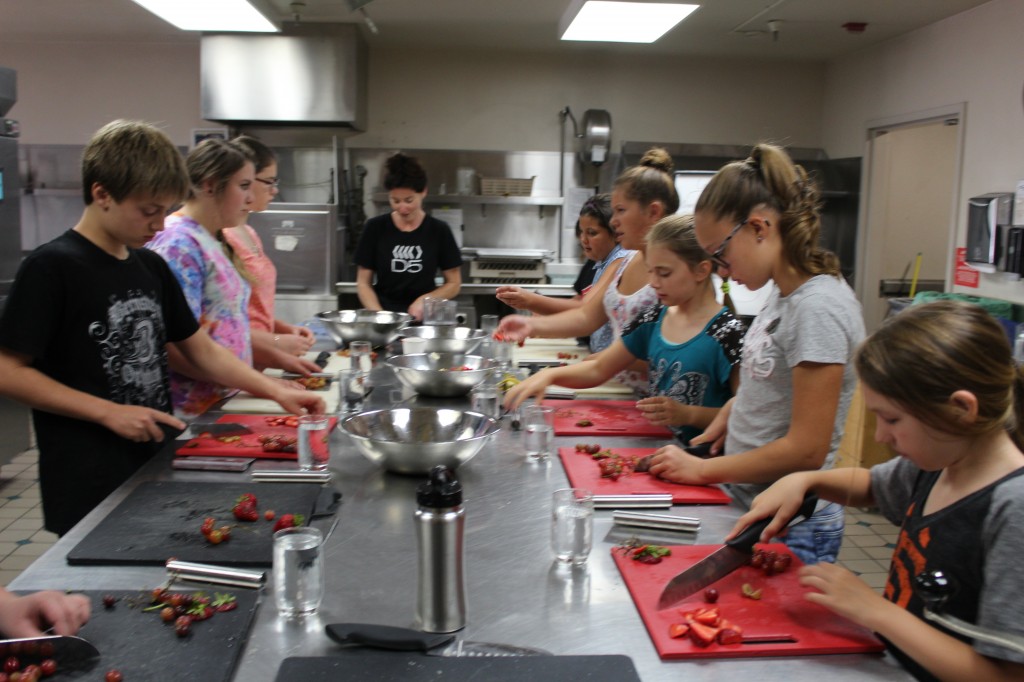
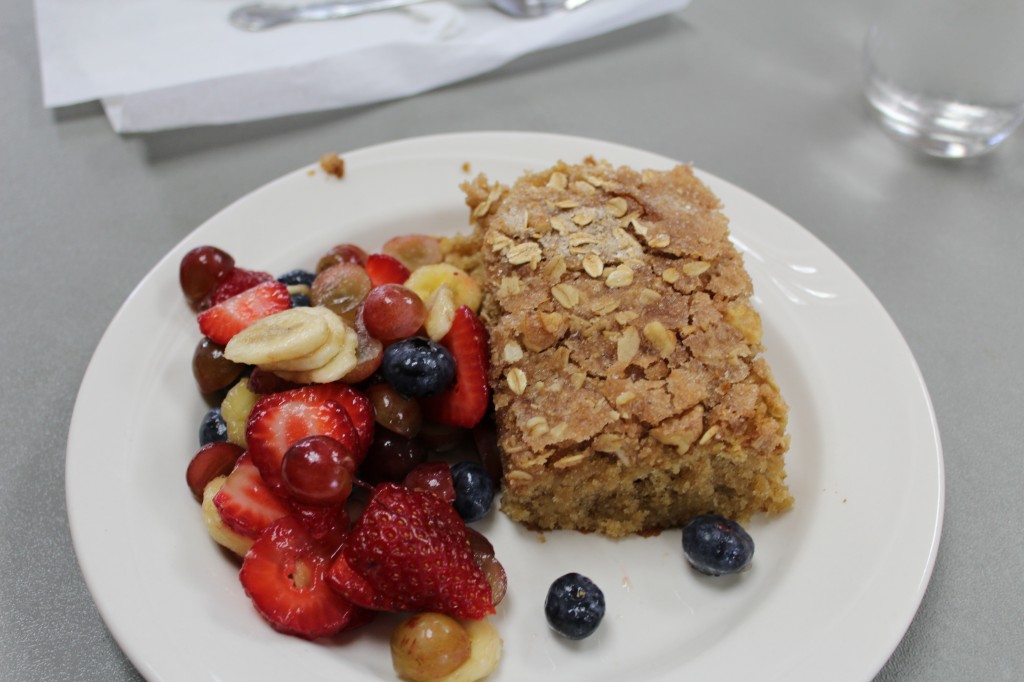
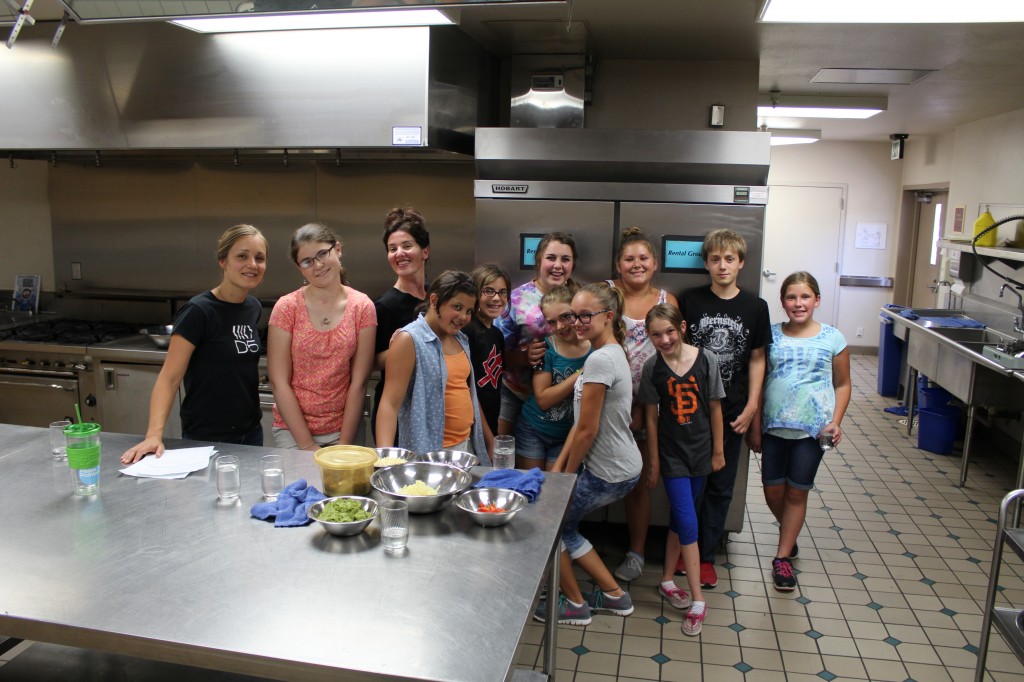
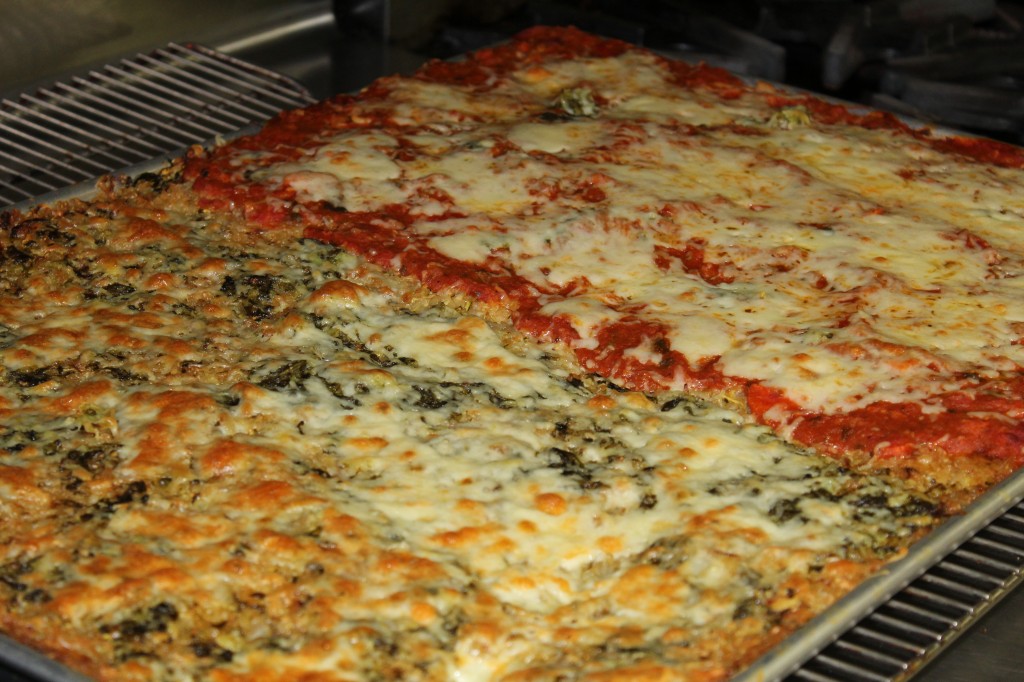
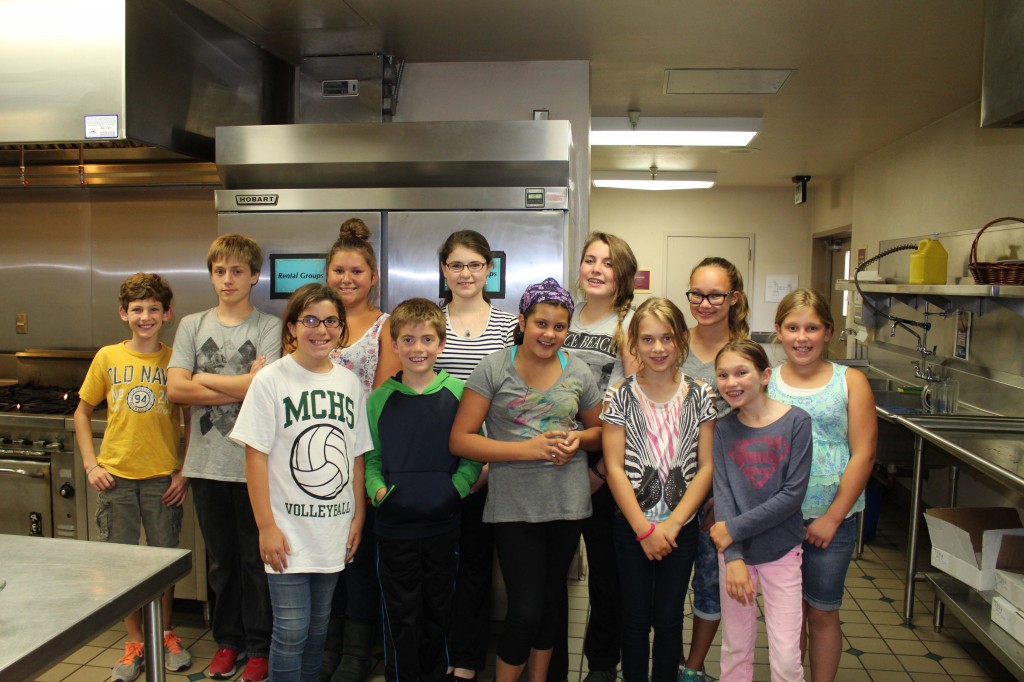
Do you believe in DirectionFive’s mission to help our kids lead healthier, happier lives? If so would you be willing to give 30/30? Just 30 minutes in 30 days helping to get the word out about D5 would be a big help and much appreciated! Invite all your Facebook friends to ‘like’ our page. Ask all of your family and friends to sign up for our newsletter on the home page of the web site. Introduce us to your children’s school principal. None of these things would take more than 30 minutes, just one time a month. Would you help us? Please email Patty James at patty.james@directionfive.org
